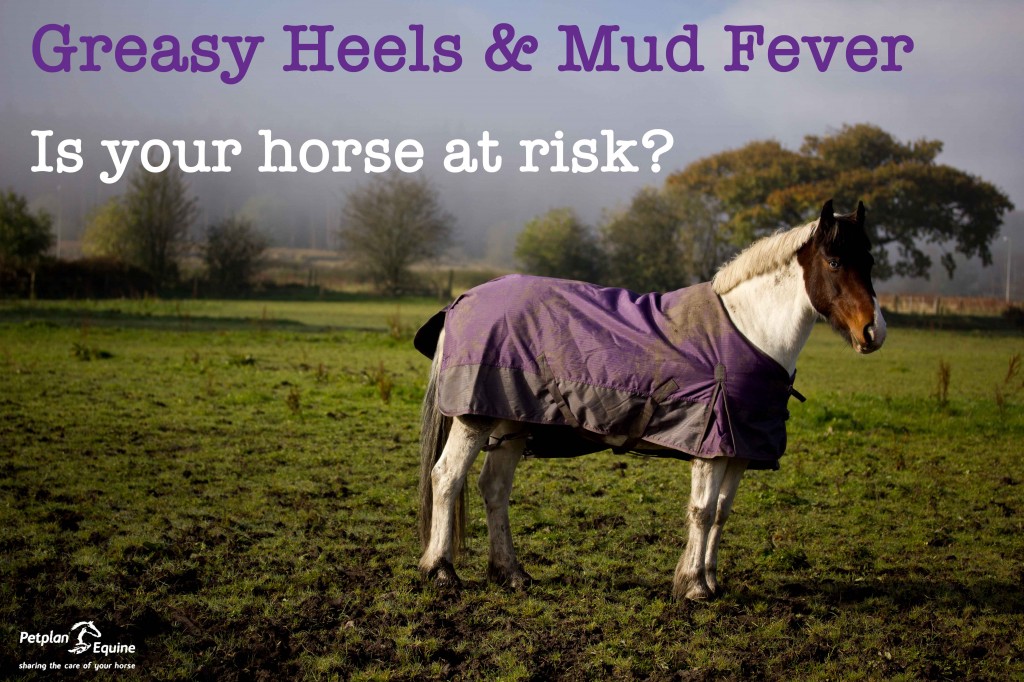
Mud Fever (or Greasy Heel in it’s early stages) is most prevalent when conditions are wet and damp. With the rainy days of autumn and winter on the way to the bottom half of Australia it is important that you familiarize yourself with the realities of this condition that affects horses in wet and damp areas.
What is Mud Fever or Greasy Heel?
Greasy heel is the result of a dermatitis or infection which is situated below the rear of the fetlock and the heel. Once this infection has moved up to the canon area it is referred to as Mud Fever.
What Causes Mud Fever and Greasy Heel?
Greasy heel is caused by a bacterial infection of the skin surrounding the heel. Horses that are in an environment where their feet are constantly wet are most likely to suffer from this disease. This is because the moisture rids the horse’s skin of protective oils and allows bacteria to enter through the softened or broken skin.
Symptoms of Mud Fever and Greasy Heel
The skin at the rear of the fetlock becomes soft, swollen and pink and oozes a sticky serum forming scabs. Once these scabs form the skin begins to crack open. The inflammation and infection is due to the same bacteria responsible for Rain Scald.
Prevention and Treatment
The way to prevent greasy heel is to make sure that your horse is free from an environment where their hooves are constantly wet. Feeding an diet that is rich in oils can aid the skin to prevent drying out. Protecting the hooves with a protective salve can help.??Keep hair around the fetlock dry and clean and clipped if the breed has feathers. Treating horses that have greasy heel means cleaning the affected area and removing the scabs to let oxygen into the wound to expose and kill any bacteria.??There are many medicated shampoo’s available to assist in the healing and disinfection.??Coconut oil??is reported as a natural alternative as due to the anti-microbial effects of the medium chain triglycerides.
This Blog was written by Petplan Australasia. Petplan Equine Insurance specialises in equine and equine industry insurance. Our practices keep the role that insurance plays in responsible equine ownership and the health of the animal at the forefront. For tips to keep your horse or pony healthy, make sure you follow us on Facebook. 



